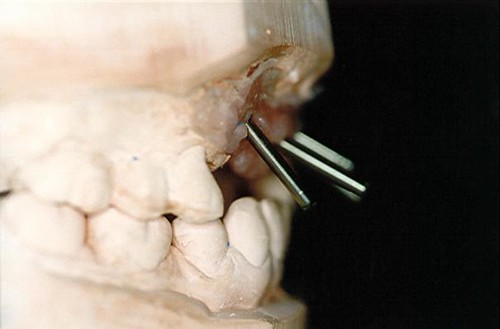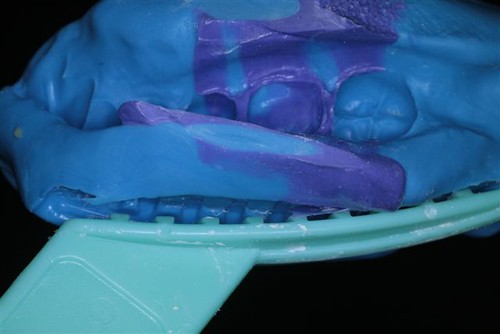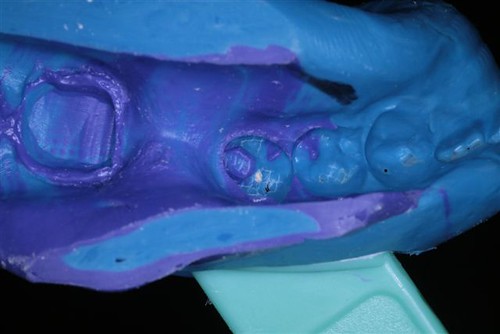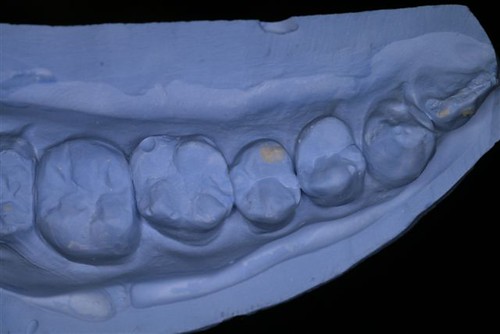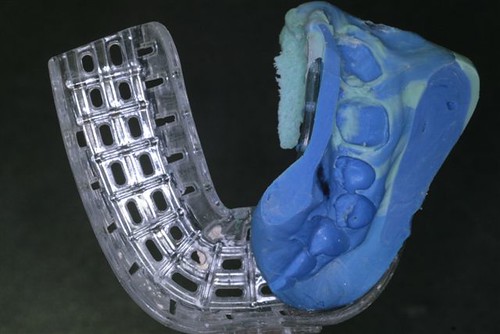It's not often that marriage guidance counselling and dentistry cross paths is it, but in the case of snoring appliances this is definitely the case.
We've made a few of these great little appliances in the lab recently with some brilliant results... and no doubt some relationships saved too. So how do they work?
How does the appliance work?(Edited extract from Silensor website)Studies have shown that approximately 40% of the population of the industrialised countries snore and that this increases to 60% in men above the age of 60.
Most of the noises produced by snoring are generated by vibration of areas of the soft tissues. During sleep, there is a natural relaxation of the muscle tone in the neck and pharynx and the normal firmness of the tissues decreases, resulting in the formation of bottlenecks or even complete obstruction of the airways, especially when the patient lies on their back.
Due to this narrowing of the pharyngeal space, the required volume of air must be respired at a higher velocity to deliver the same quantity of air. This results in stimulation and vibration of soft tissues, such as the velum palatinum (soft palate) and the uvulum.
The SILENSOR makes use of the fact that the pharyngeal space is enlarged when the lower jaw is displaced in an anterior direction.
 The SILENSOR consists of two separate clear splints made in either hard or soft materials which fit over the upper and lower arches. The splints are connected by two lateral rotating connectors which gently pull the lower jaw forward. Any further opening of the mouth increases the anterior displacement of the lower jaw.
The SILENSOR consists of two separate clear splints made in either hard or soft materials which fit over the upper and lower arches. The splints are connected by two lateral rotating connectors which gently pull the lower jaw forward. Any further opening of the mouth increases the anterior displacement of the lower jaw.
The connectors come in 4 lengths and we usually start with length number 2. If the patient doesn't feel the benefit we can use a shorter connector to move the lower jaw more anteriorly. Alternatively if the patient feels length 2 is too much we can use a longer connector and not move the lower jaw quiet so much.
What do we need at the lab?
All we need at the lab are upper and lower impressions, a centric bite and a note as to whether the patient requires hard or soft splints. The device can be returned within 10 workings with no interim appointments needed. The lab fee for this is £167 and the person to contact at the lab is Keith
This is one of the simplest and quickest surgery procedures with only 2 appointments and 2 impressions needed; and yet, it can provide the most life changing results for patients that suffer from this problem... although the person that often benefits the most is their partner!
An opportunity to market them to your patients
And now with my marketing head firmly screwed on... why not run a special offer to your patients for the end of next month at Halloween...
"Make sure the only thing keeping you awake at night is your Phasmophobia*... XX% off anti-snoring appliances from 31st October to Xth of November
*an abnormal and persistent fear of ghosts, spectres and phantasms to you and me"
And on that bomb shell... I'll say no more...
Mark




